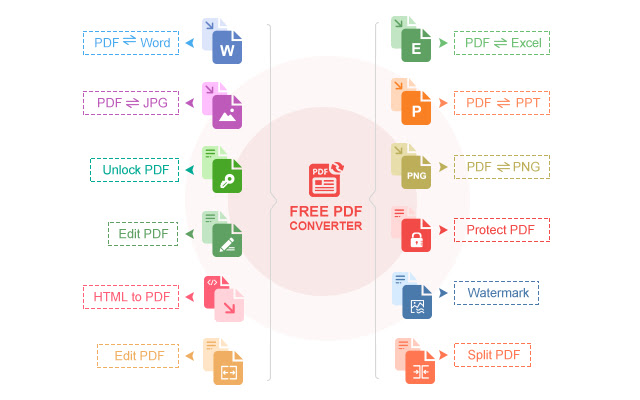Converting Excel Spreadsheets to PDF: Tips and Tricks
- Get link
- X
- Other Apps
Introduction to the Importance of Converting Excel to PDF
Have you ever wondered why converting Excel spreadsheets to PDF is such a hot topic? Well, let's dive in!
Benefits of PDF Format
PDF, short for Portable Document Format, is a universal file format that ensures your document looks the same on any device. Unlike Excel files, which can sometimes appear differently based on the software used, PDFs maintain consistency.
Challenges with Excel Files
Excel files can be tricky. Not everyone has Microsoft Excel installed, and sharing them can sometimes lead to formatting issues. That's where converting them to PDF comes in handy!
Basic Methods of Converting Excel to PDF
So, how can you convert your Excel files to PDF? Let's explore some straightforward methods.
Using Microsoft Excel
If you're using Microsoft Excel, you're in luck! Excel offers a built-in feature that allows you to save or export your spreadsheet as a PDF. It's as simple as clicking a few buttons.
Online Conversion Tools
Don't have Microsoft Excel? No worries! There are plenty of online tools available that allow you to upload your Excel file and convert it to PDF in seconds. Just be sure to choose a reputable tool to ensure your data remains secure.
Advanced Techniques for High-Quality Conversion
Want to take your conversion game to the next level? Let's delve into some advanced techniques.
Adjusting Page Layout
Sometimes, the default layout might not be ideal for your needs. Most conversion tools and software offer options to adjust the page layout, ensuring your PDF looks just the way you want it to.
Embedding Links and Images
Did you know you can embed links and images in your PDF? This is especially useful if your Excel spreadsheet contains important data that you want to reference or share.
Troubleshooting Common Conversion Issues
Like any process, converting Excel to PDF can sometimes come with its challenges. Let's address some common issues.
File Size Concerns
Large Excel files can result in large PDF files, which might be challenging to share or store. Consider compressing your PDF or optimizing your Excel file before converting.
Formatting Errors
Sometimes, the conversion process might not capture all the formatting elements correctly. If you encounter any errors, don't panic! Most tools offer options to adjust the formatting as needed.
Tips for Secure and Confidential Conversions
Security is paramount when dealing with sensitive data. Let's explore some tips for ensuring your conversions are secure and confidential.
Password Protection
Want to add an extra layer of security? Consider password-protecting your PDF. This ensures that only authorized individuals can access the content.
Redacting Sensitive Information
If your Excel spreadsheet contains sensitive information, such as personal or financial data, consider redacting or removing it before converting to PDF. This helps protect privacy and ensures compliance with data protection regulations.
Conclusion and Final Thoughts
Converting Excel spreadsheets to PDF doesn't have to be complicated. With the right tools and techniques, you can easily create high-quality PDFs that are consistent, secure, and easy to share. So, the next time you find yourself needing to convert an Excel file, remember these tips and tricks!
In today's digital age, the ability to convert various file formats to PDF (Portable Document Format) and vice versa is crucial for professionals across industries. Whether it's for preserving document integrity, ensuring universal compatibility, or leveraging advanced features, mastering advanced PDF conversion techniques can streamline workflows and enhance productivity. This Girar paginas pdf guide delves into expert insights and strategies to help you navigate the complexities of PDF conversions effectively.
1. Understanding the PDF Format
Before diving into advanced techniques, it's essential to understand the basics of the PDF format:
- Structure: PDFs encapsulate text, images, fonts, and vector graphics in a single file.
- Universality: PDFs can be viewed on virtually any device or operating system without compromising layout or formatting.
- Security: PDFs offer robust encryption and password protection options.
2. Advanced Conversion Tools
While basic conversion tools are suitable for simple tasks, advanced scenarios demand specialized tools:
- OCR (Optical Character Recognition) Software: For converting scanned PDFs into editable text, tools like Adobe Acrobat Pro, ABBYY FineReader, or online platforms like OCR.space can be invaluable.
- Batch Converters: When dealing with multiple files, batch conversion tools such as PDFelement or Adobe Acrobat Batch Processing can save time.
- API-Based Solutions: For integration into custom workflows or software applications, API-based PDF conversion services like PDF.co provide flexibility and scalability.
3. Best Practices for High-Quality Conversions
Achieving high-quality conversions requires attention to detail:
- Maintain Original Formatting: Always prioritize tools and settings that preserve the original layout, fonts, and graphics.
- Resolution and Compression: Adjust https://www.facepdf.com/ resolution and compression settings to balance file size with quality, especially for scanned documents.
- Metadata and Accessibility: Ensure that converted PDFs contain relevant metadata and are accessible to users with disabilities by utilizing tagging and accessibility features.
FAQs
Why should I convert Excel spreadsheets to PDF?
- Converting to PDF ensures consistency across devices and software, making it easier to share and view your documents.
Are there any free tools available for converting Excel to PDF?
- Yes, there are several free online tools available. However, be sure to choose a reputable one to ensure your data remains secure.
Can I adjust the layout of my PDF after converting from Excel?
- Absolutely! Most conversion tools and software offer options to adjust the layout and formatting as needed.
How can I ensure my PDF conversions are secure?
- Consider using password protection and redacting sensitive information before converting to PDF.
What should I do if I encounter formatting errors during the conversion process?
- If you encounter any errors, most tools offer options to adjust the formatting to ensure your PDF looks just the way you want it to.
- Get link
- X
- Other Apps


Comments
Post a Comment